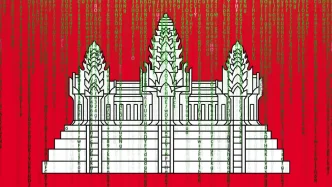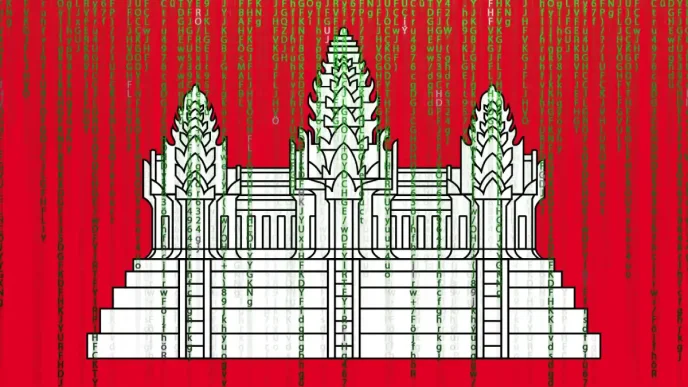Significant changes to Vietnam’s constitution, proposed on April 3, 2025, have ignited a heated discussion about the future of governance in the country. The amendments, introduced by the Communist Party of Vietnam (CPV), aim to redefine key aspects of political authority and economic policy, potentially reshaping the balance of power within the state. As the National Assembly prepares for a critical vote, questions linger about the implications for Vietnam’s single-party system and its citizens’ rights.
Proposed Amendments and Their Scope
The draft amendments, tabled during a session of the National Assembly in Ha Noi, focus on several pivotal areas. Among the most notable is a proposed adjustment to the term limits of senior leadership positions, including the state president and prime minister. While specifics remain under wraps, sources close to the CPV suggest the changes could extend tenures under certain conditions, a move framed as ensuring “stability in leadership” during times of global uncertainty.
Additionally, the reforms seek to strengthen the role of the Vietnam Fatherland Front, a political coalition under CPV oversight, in monitoring public sentiment and grassroots governance. Economic provisions are also on the table, with clauses aimed at accelerating state-led digital transformation and offering incentives for foreign investment, pegged at an estimated 500 billion Vietnamese Dong (US$20 million) in initial funding for tech infrastructure.
According to a statement from the National Assembly’s official website, the amendments are designed to “reflect the evolving needs of a modern socialist state while preserving Vietnam’s revolutionary heritage.” However, the lack of detailed public disclosure has fueled speculation about the true intent behind the reforms.
Public and Political Reactions
Reactions to the proposed changes are sharply divided. Within Vietnam, state media outlets like Vietnam News have portrayed the amendments as a necessary evolution, quoting CPV spokesperson Tran Van Minh as saying “These reforms will fortify our nation’s resilience against external challenges.” Meanwhile, independent commentators and activists, many of whom operate under strict government scrutiny, have expressed concern over potential centralization of power.
On social media platforms like X, sentiment among Vietnamese users appears mixed. Posts from accounts based in Ha Noi and Ho Chi Minh City highlight fears that extended term limits could undermine democratic accountability, even within the confines of a single-party system. One user wrote, “Stability is important, but at what cost to our voice?” These concerns, while not representative of all public opinion, underscore a growing demand for transparency.
Internationally, the response has been cautious. Analysts from Reuters suggest that while economic reforms could attract investors, political changes may draw scrutiny from human rights organizations. A report from the BBC noted that if confirmed, extended leadership terms might signal a step away from gradual political liberalization, though no definitive evidence supports this claim at present.
Historical Context of Constitutional Change in Vietnam
Vietnam’s constitution, last comprehensively revised in 2013, has historically served as a tool to codify the CPV’s dominance while adapting to global economic integration. The 2013 amendments, for instance, reaffirmed the state’s commitment to a market-oriented socialist economy, paving the way for trade agreements like the Comprehensive and Progressive Agreement for Trans-Pacific Partnership (CPTPP). However, political reforms have often lagged behind economic ones, with the CPV maintaining tight control over dissent and public discourse.
The current proposals come at a time of heightened geopolitical tension in the South China Sea and economic competition with regional neighbors like Thailand and Indonesia. Experts argue that the CPV may be using constitutional reform to project internal stability while navigating external pressures. Dr. Linh Nguyen, a political scientist based in Singapore, noted in an interview with Vietnam News on April 3, 2025, that “Vietnam’s leadership sees reform as a balancing act between maintaining authority and meeting modern governance demands.”
Potential Impacts on Governance and Economy
If passed, the amendments could have far-reaching consequences for Vietnam’s political landscape. Extended term limits, if confirmed, may alter succession dynamics within the CPV, potentially concentrating power among a smaller cadre of leaders. While proponents argue this could streamline decision-making during crises, critics warn it might stifle internal debate and limit opportunities for younger leaders to rise through the ranks.
On the economic front, the focus on digital transformation aligns with Vietnam’s ambition to become a regional tech hub. The proposed 500 billion Vietnamese Dong (US$20 million) investment, though modest compared to initiatives in Singapore or Malaysia, signals intent to modernize critical sectors like e-governance and cybersecurity. However, questions remain about implementation, especially given Vietnam’s uneven infrastructure development across rural and urban areas.
Foreign investors, meanwhile, may welcome incentives embedded in the reforms, though some express reservations about political stability. A Jakarta-based economist, speaking anonymously due to the sensitivity of the issue, suggested that “while economic openings are promising, governance risks could deter long-term commitments if reforms prioritize control over inclusivity.”
Challenges and Unanswered Questions
One of the primary challenges facing the National Assembly is public trust. Vietnam’s tightly controlled media environment makes it difficult to gauge authentic public sentiment, and the government’s history of limiting dissent raises doubts about how feedback will be incorporated into the final draft. The Vietnam Fatherland Front’s expanded role in monitoring grassroots opinion could help bridge this gap, but only if its actions are perceived as independent from CPV directives—a prospect many observers deem unlikely.
Legally, the amendments must navigate Vietnam’s Law on Cybersecurity (2018), which imposes strict controls on online discourse. Any misstep in public consultation could risk allegations of suppression, further complicating the reform process. While no evidence suggests the CPV intends to use the reforms to tighten digital oversight, the possibility remains a point of contention among activists.
Regional and Global Implications
Vietnam’s constitutional reforms do not exist in a vacuum. Neighboring countries like Laos and Cambodia, both with similar single-party or dominant-party systems, may view the outcome as a precedent for their own governance models. In Thailand, where political instability has persisted for decades, analysts are watching to see if Vietnam’s reforms offer a blueprint for balancing authority and modernization.
Globally, the United States and European Union, key trade partners under agreements like the EU-Vietnam Free Trade Agreement (EVFTA), are likely to monitor the reforms for signs of political backsliding. While economic provisions may strengthen ties, any perceived rollback on rights or transparency could strain diplomatic relations, though such outcomes remain speculative at this stage.
As Vietnam’s National Assembly debates these historic amendments, the nation stands at a crossroads. Will the reforms usher in a new era of stability and growth, or will they deepen existing divides between the state and its people? For now, the answers remain elusive, but the stakes could not be higher for Vietnam’s future on the global stage.














